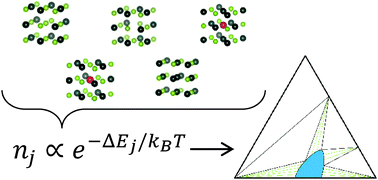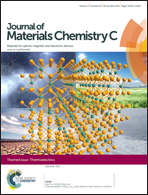Determining dilute-limit solvus boundaries in multi-component systems using defect energetics: Na in PbTe and PbS
Abstract
Defect calculations are standard practice for understanding the electronic structure of dopants and alloying elements in semiconductors and insulators. However, these calculations have untapped potential to quantitatively determine thermodynamic properties of doped semiconductor systems. We present a methodology which couples defect energetics and compound formation energies to determine defect concentrations in a host material as functions of temperature and chemical equilibrium. From these defect concentrations we find the solvus boundaries of the host phase in a multi-dimensional composition space. As an example, we present first-principles calculations of the solvus boundaries of PbTe and PbS in Na–Pb–Te and Na–Pb–S. We calculate the formation energies of compounds in Na–Pb–S–Te and the defect energetics of a large number of intrinsic and Na-containing defects in PbTe and PbS. With these, we obtain equilibrium defect concentrations and solvus boundaries for PbTe and PbS. We find vacancies are the lowest-energy intrinsic defects in PbTe and PbS. We also find Na substituted for Pb is the lowest-energy Na defect in both PbTe and PbS. We find that the PbTe solvus boundary in Na–Pb–Te is a sharply peaked function of composition. We find negative defect formation energies for Na on Pb in PbS, suggesting the existence of a ternary compound in the Na–Pb–S system. The methodology presented herein is a general and straightforward way to extend the use of defect calculations from making inferences about the electronic structure of dopants to calculating solvus boundaries in multicomponent systems.

- This article is part of the themed collection: The Chemistry of Thermoelectric Materials

 Please wait while we load your content...
Please wait while we load your content...